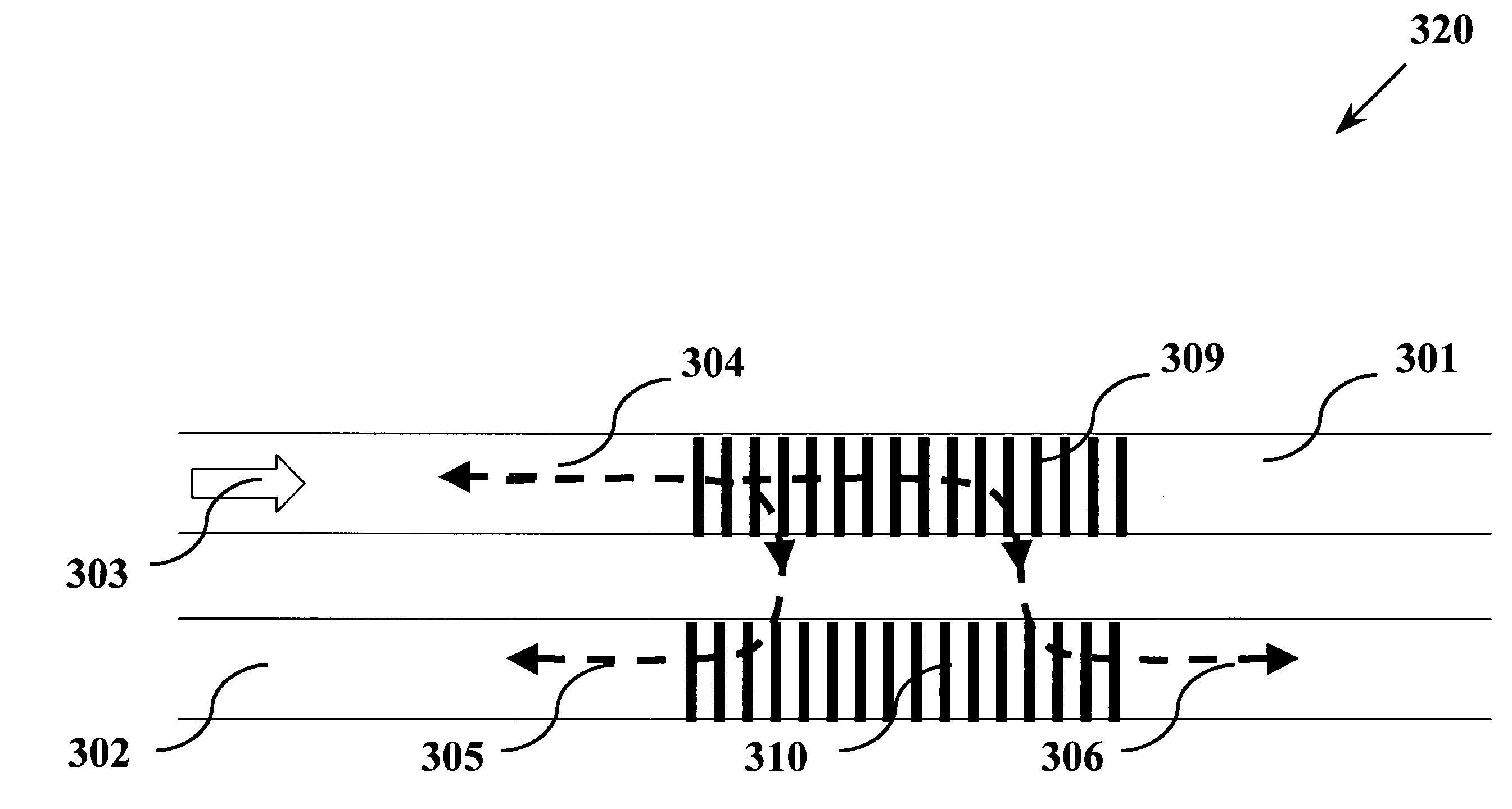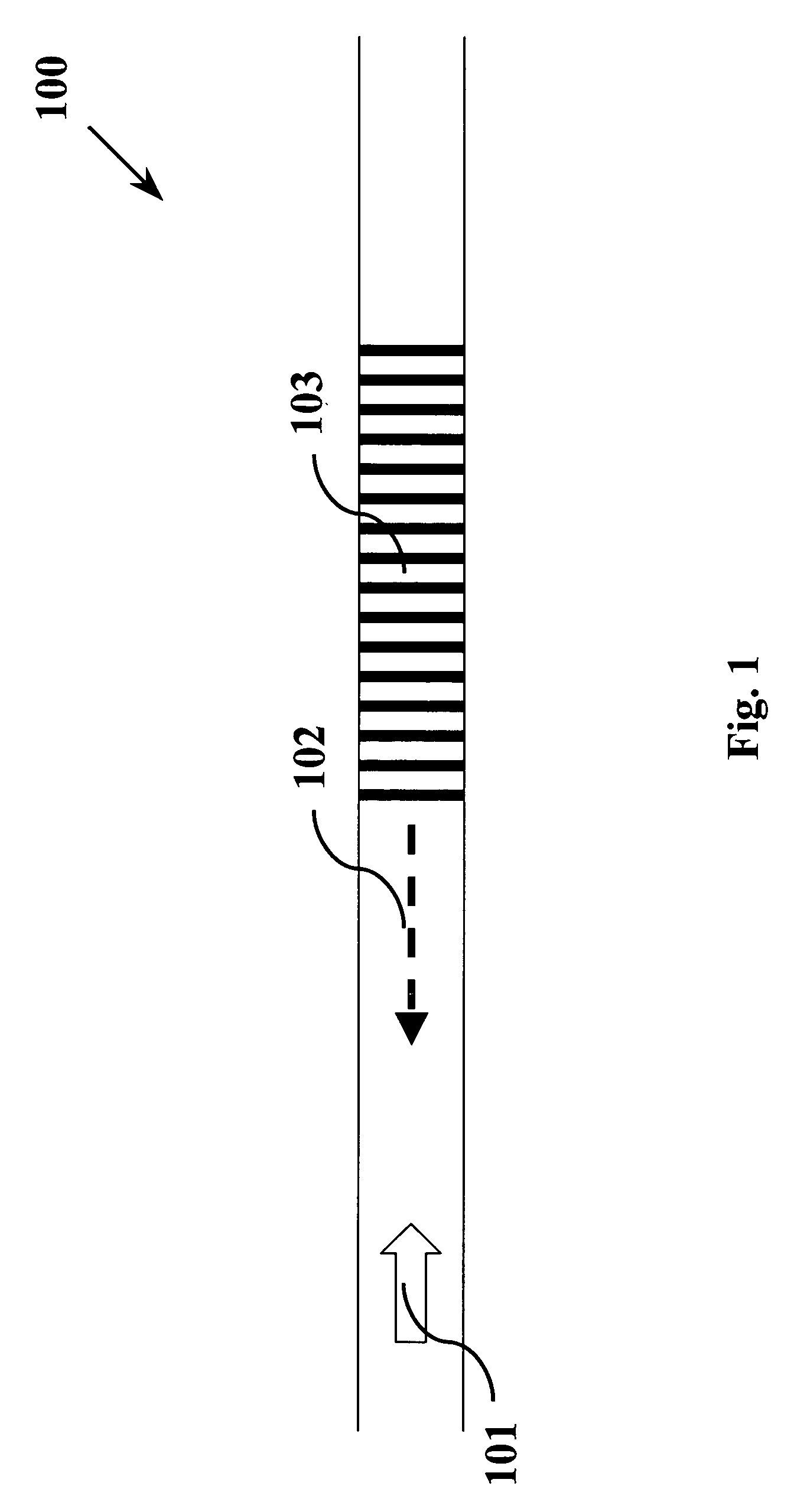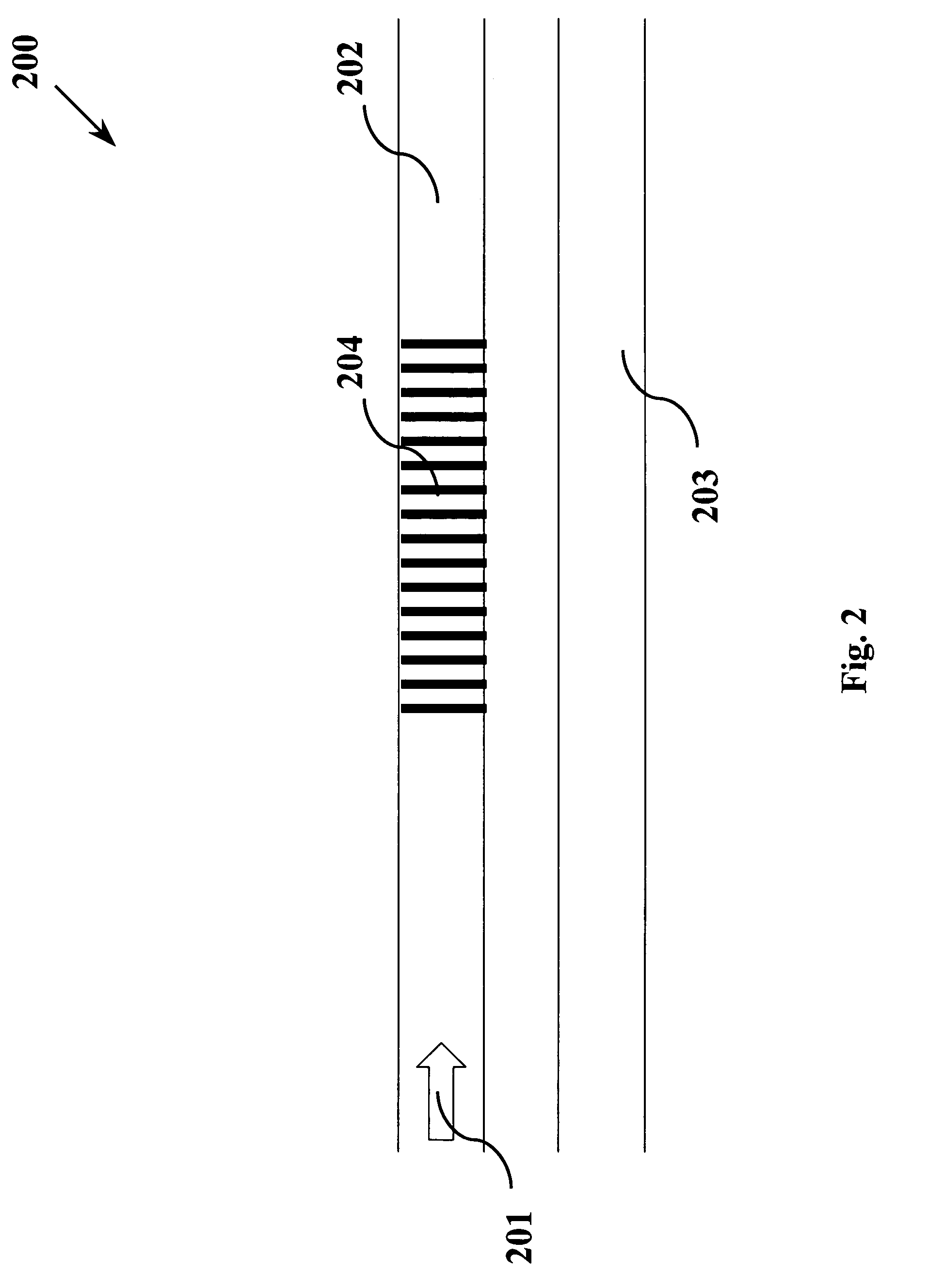Grating-based wavelength selective switch
a wavelength selective switch and wavelength-selective technology, applied in the field of wavelength selective switch technology, can solve the problems of difficult manufacturing, high packaging cost, limited current state of the art in wavelength selective optical switching based signal transmission system, etc., to achieve different optical propagation constants, reduce cross-talk, and increase the effect of signal coupling of optical transmission
- Summary
- Abstract
- Description
- Claims
- Application Information
AI Technical Summary
Benefits of technology
Problems solved by technology
Method used
Image
Examples
case 1
ation of the Contra-directional Coupling Signal 305 with β12
It should be noticed that in this case, from (3), (4) and (5) we have[0058](i) λR>λB1; and[0059](ii) λR>λBC.
As a result this case can be further subdivided into two sub-cases, as follows.
embodiment 1a
f the Contra-directional Coupling Signal 305 with β12 and λB1>λBC
If the window of wavelength is limited (within the desired range that are interested in) to between λmin and λmax, the grating period should be designed such that
λB1(max)min (6)
In view of (5), this becomes
2β1Λmax<kλmin (7)
On the other hand, according to (3)
kλmax=(β1+β2)Λmax (8)
Combining (7) and (8), one obtains the selection rule for this case
[0060]λminλmax>2β1β1+β2(9)
embodiment 1b
f the Contra-directional Coupling Signal 305 with β12 and λB1BC
Similar to the previous situation, in this case, it is required that
λBC(max)<λmin (10)
Referring to (4), this means
(β2−β1)Λmaxmin (11)
Combining (7) and (10), the selection rule for this case is given by
[0061]λminλmax>β2-β1β1+β2(12)
Thus, from (9) and (12) we obtained a general selection rule for Case 1 when β12
[0062]λminλmax>max(2β1β1+β2,β2-β1β1+β2)(13)
PUM
 Login to View More
Login to View More Abstract
Description
Claims
Application Information
 Login to View More
Login to View More - R&D
- Intellectual Property
- Life Sciences
- Materials
- Tech Scout
- Unparalleled Data Quality
- Higher Quality Content
- 60% Fewer Hallucinations
Browse by: Latest US Patents, China's latest patents, Technical Efficacy Thesaurus, Application Domain, Technology Topic, Popular Technical Reports.
© 2025 PatSnap. All rights reserved.Legal|Privacy policy|Modern Slavery Act Transparency Statement|Sitemap|About US| Contact US: help@patsnap.com



